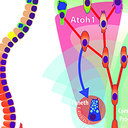Glycyrrhizic acid confers neuroprotection after subarachnoid hemorrhage via inhibition of high mobility group box-1 protein: a hypothesis for novel therapy of subarachnoid hemorrhage.
Raktažodžiai
Santrauka
Subarachnoid hemorrhage usually results in poor clinical outcome and devastating neurological deficits. The early brain injury and delayed vasospasm after subarachnoid hemorrhage (SAH) are involved in the poor prognosis to the patients, while the mechanisms have not been well elucidated. Previous studies found an up-regulation of Toll-like receptor 4 (TLR4), inflammatory factors and high-mobility group box 1 (HMGB1) in the cortex after SAH. Increased inflammatory response contributes to the early brain injury and delayed vasospasm after SAH. Moreover, we found that the inflammatory response could be induced and amplified following recombinant HMGB1 (rHMGB1) addition in cultured neurons. Based on the latest researches in this field, we raised a hypothesis that HMGB1, a prototypical member of damage-associated molecular pattern (DAMP) family, could be passively released from the damaged neuroglia cells and hemotocyte lysis after SAH. Extracellular HMGB1 initiated the inflammation through its receptors. The inflammatory mediators then acted on the neurocytes to make them actively release HMGB1 continuously, manifesting an double phases. HMGB1 might be the key factor to induce sterile inflammation, and thus be one of the origin of early brain injury and delayed vasospasm after SAH. Inhibition of extracellular HMGB1 activities might be a novel therapeutic target for SAH to reduce the damaging inflammatory response. Glycyrrhizic acid (GA) which was extracted from liquorice and confirmed as a nature inhibitor of HMGB1 with little side-effects could inhibit extracellular HMGB1 cytokine activities and reduce the level of inflammatory response, thus alleviating early brain injury and cerebrovasospasm. GA might be a new novel therapy of SAH for better outcomes.



